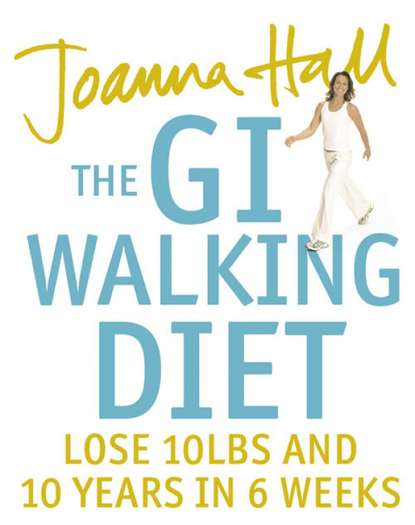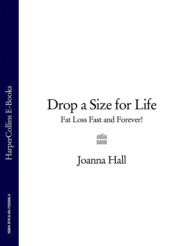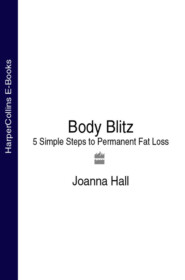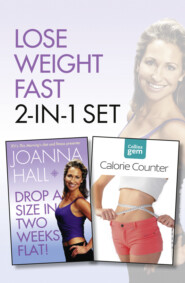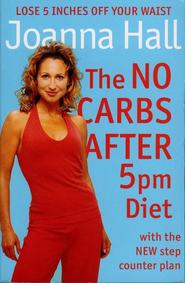По всем вопросам обращайтесь на: info@litportal.ru
(©) 2003-2024.
✖
The GI Walking Diet: Lose 10lbs and Look 10 Years Younger in 6 Weeks
Автор
Год написания книги
2018
Настройки чтения
Размер шрифта
Высота строк
Поля
Wanting a new body
Elderly
My memory is going fast
Decrepit
In my research for this book, I interviewed over a thousand men and women aged over 50. I asked them about their eating and activity habits, for their views on their bodies and their attitudes to this phase of their lives. Their thoughts, views, needs and wants – coupled with the exciting new advances being made in research – have directly shaped this book.
So what did my research tell me?
83 per cent thought that their body needed an overhaul
39 per cent considered themselves young at heart
77 per cent described themselves as a bit baggy and saggy
51 per cent considered themselves old
Over 85 per cent of respondents wanted to address weight loss and middle-age spread and improve their health
Sadly, less than 1 per cent considered themselves sexy
Changing Your Attitudes and Habits (#)
You may feel daunted by the physical changes you are experiencing as you grow older. However, the exciting thing about this phase is that you now have the ability – more than at any other time in your life – to make a significant impact on your health. You also have more to gain from your efforts than at any other time.
Active ageing is as much about attitude as it is about action. Your children may have flown the nest; you may have retired; you may have more time on your hands – and this is the time for you. It’s an age of choice without limitations, a time of joy with few constraints. While some of us may still have some demands on our time, this does not detract from the fact that this stage in your life represents the best window of opportunity for your physical body.
And you know what? The only things that may be stopping you from taking action are your attitude and deep-rooted habits. Attitudes and habits can be difficult to change – after all, you may have been nurturing them for decades.
I’ve designed all the plans in this book so you can grab and make the most of this window of opportunity. They not only deliver results but also help you nurture new, healthier habits and attitudes without feeling you have to give up the life you enjoy. By making small changes on a regular, consistent basis, you can lose weight, feel fitter, enjoy more energy and even sleep better. These small steps together mean big changes for you and your body.
So don’t you dare think you’ve left it too late. It’s never too late. The time has come to open the window of opportunity, stop being complacent about this phase of your life, take a deep breath and go for it.
One Step at a Time
When you first look at the plan you may feel a little daunted about what you have to do. The plan has been designed to be simple and easy to follow. You’ll see that you get to choose whether to start the walking plan at an ‘entry’ or ‘advanced’ level, depending on your current fitness level (see Chapter 4).
I’d be the first to acknowledge, however, that life can be busy and throw us different challenges. Family commitments, work and health issues can all make it seem difficult to find time to exercise. While I wouldn’t encourage you to use these busy times as excuses, I’d far rather you did something than wait for the ‘perfect’ time to start. In my experience, the perfect time rarely comes, and since this stage of your life is your greatest window of opportunity, this may be the perfect time to approach your plan in a phased way. For example, you may choose to follow the flexibility plan for the first six weeks, then the strength programme for weeks six to twelve, and finally the walking plan for weeks twelve to eighteen. A phased approach such as this will get you on the road to success. You’ll feel healthier and more in control, although your weight loss may be a little slower than if you were following the complete plan.
Timetable for a Phased Approach to the GI Walking Diet
How the Body Ages (#)
Nobody wants their body to age, but the great news is that you can slow down the rate of ageing. In fact, ageing can a positive experience, not the negative one many of us feel and dread.
In physical terms, the ageing process results in a gradual loss of coordination, flexibility, strength, power and endurance. These physiological changes can have a significant impact on our emotions, our ability to lead independent lives and our energy and self-esteem.
Whether you like it or not, your body will go through a number of changes as it ages. How these changes affect you is partly dependent on your genes, diet, and how physically active you have been through your life. Think about how your parents or siblings have aged and you’ll have a good indication of how your body is affected by your genes. The geneticist Claude Bouchard believes that genes determine 60 to 80 per cent of the body’s rate of physical change; other factors, such as diet and the amount and type of physical activity we take, can change our bodies by 20 to 40 per cent.
Fortunately, evidence suggests that your physical activity levels after the age of 35 can have a more significant effect on how you age than the amount of exercise taken in earlier years. Although you may not be able to reverse declines in physical function, they can be slowed down. Understanding what is happening to your body can help you appreciate how your diet and activity levels can positively impact upon your weight, energy, posture and, most importantly, how you look and feel about yourself.
A fit man at 70 is the same as an unfit man at 40.
Much of the deterioration attributed to ageing is now linked to physical inactivity. Our goal is to push back frailty to a very small part of life experience. Or, as the philosopher Ashley Montagne has urged, ‘To die young as late in life as possible.’
You can do this without spending masses of time exercising, waving goodbye to your existing lifestyle or surviving on a diet of bizarre foods. And you can do this in just six weeks.
Ageing and Physical Ability
Strength, power, endurance and flexibility are terms we often hear, but understanding exactly what they mean will help you appreciate your own body’s needs, allowing you to tailor the six-week plan to your needs.
Strength and Power
Muscular strength refers to the maximum force that can be exerted by a muscle group. You may be more familiar with strength referring to the maximum weight or load that can be lifted once. Power refers to the greatest amount of force that can be exerted, and requires both strength and speed of movement. This may all sound rather technical, but in real terms the impact of these capacities on your body can be far-reaching. Muscle strength declines significantly with advancing age, which results in a decreased ability to perform many daily tasks. Activities such as lifting heavy shopping bags can become difficult. Your grandchild may need to be handed to you rather than you being able to lift them directly from the floor. Even getting out of a low chair can pose a problem, perhaps requiring a few momentum-gathering rocks backwards and forwards to get you up. Later in life, both strength and power are important for balance and reducing the risk of falling.
Endurance
Endurance, often referred to as stamina, is a muscle’s ability to keep going. All muscles need endurance – the muscles of your legs need it to keep walking, for example – but one of the most important muscles is the heart. The endurance of your heart is vital to your wellbeing, and it’s often referred to as your ‘huff and puff’. Having poor endurance means that it can be hard work running after a bus, train or walking briskly up a hill. Climbing a flight of stairs can leave you feeling uncomfortable and breathless. If you have young grandchildren, you’ll know how much energy and endurance they have and how you need to be able to keep up with them!
Flexibility and Mobility
Flexibility refers to the range of motion at a particular joint, while mobility refers to the ability to take your joints through this range. Flexibility and mobility are determined by the elasticity of the connective tissue, as well as the specific length of individual ligaments and tendons. As we age, the connective tissue becomes less elastic. The special lubricating synovial fluid – found inside certain joints such as the hip, knee and shoulder – becomes less mobile and runny. This makes joints feel stiff and perhaps a bit ‘clicky’, limiting the range of motion we may be able to take them through. This can make it difficult to unzip a back-fastening piece of clothing, to reach up for something on a top shelf or to bend down to pick something up. Maybe even getting your leg up and over the bath can be a bit of a challenge, requiring you to hold on to something for support. Or perhaps you find when you need to turn to see something you have to turn your whole body around, instead of just being able to rotate at your waist.
The bottom line is that maintaining your level of physical capacity in terms of strength, endurance and flexibility is very important for continued independence. Power, strength and flexibility are all closely related, and improving one of these will have a knock-on effect on the others. The GI Walking Diet enables you to improve all these abilities in a simple, effective and easy-to-follow way.
Physiological Effects of Ageing
Resting Metabolic Rate
Your resting metabolic rate (RMR) is the amount of calories your body requires just to live. It’s determined by your weight and the amount of muscle and body fat you have. As we age, RMR tends to decline. This is partly due to decreased muscle mass. It’s also affected by changes to your nervous system, specifically the sympathetic nervous system (SNS), slowing the response time between brain messages and muscle movement. Resting metabolic rate is what most people mean when they say ‘basal metabolic rate’ (BMR). These two terms are used interchangeably, although they are not technically the same.
As part of the normal ageing process, most body organs decrease in functional capacity, resulting in a 2 per cent decline in BMR each decade. However, if physical activity also declines, BMR will decrease more quickly, and there will be a greater increase in fat mass. This means that, over time, your metabolic rate slows down, and weight gain will occur unless you decrease the amount of calories you consume and increase your level of physical activity. Your metabolic rate may also decrease as the cardiovascular, gastrointestinal and respiratory systems slow down with age, which can influence digestion, absorption and nutrition needs.
What This Means to You
The biggest impact of a reduced RMR is that you will find it more difficult to maintain a healthy weight, and you may experience weight gain.
What You Can Do
Experts are divided on how much weight gain is a product of the natural ageing process and how much is attributable to other factors, such as decreased energy expenditure through physical activity. But one thing’s certain: decreased physical activity results in less muscle mass, which in turn impacts upon your RMR or the rate at which the body burns calories. But it doesn’t have to be like this …
Action Worth Investing In
By following the six-week plan, specifically the walking and strength programme, you can feel confident that you will lose weight.
VO





